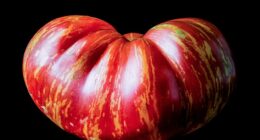Planting involves placing a seedling or plant into the ground, while sowing is scattering seeds onto soil for germination.
TL;DR Planting Vs. Sowing
Planting refers to the process of placing a seedling or plant into the soil. This method is typically used when you have already started growing your plants indoors or have obtained young plants from a nursery.
Planting allows for more control over the growth and development of your crops, as you can choose where exactly each plant goes and ensure optimal spacing.
Sowing involves scattering seeds directly onto prepared soil. This method is commonly used when starting from scratch or growing crops that do not easily transplant well.
Sowing allows for natural dispersion and germination of seeds, often resulting in a dense and abundant crop.
Planting

Planting is an essential aspect of gardening that involves placing plants, seedlings, or bulbs into the ground. It’s a method used to establish new vegetation in your garden or landscape. When you plant, you typically work with already developed plants rather than starting from seeds.
Sowing

Sowing is the process of planting seeds in a prepared area of soil. It involves scattering the seeds evenly over the surface and then covering them lightly with soil or compost. This method allows for a more natural distribution of seeds, mimicking how plants would spread their seeds in nature.
Planting Vs. Sowing – Key differences
| Aspect | Planting | Sowing |
|---|---|---|
| Action | Placing seedlings or plants in soil | Scattering seeds on soil surface |
| Starting Material | Seedlings or young plants | Seeds |
| Depth | Planting at a specific depth | Seeds are often lightly covered |
| Control | More controlled, fewer seeds | Less controlled, many seeds |
| Time | Usually done with established plants | Typically done with seeds |
| Purpose | Often used to ensure uniform growth | Used to disperse seeds for growth |
| Germination | Seedlings have already germinated | Seeds germinate after sowing |
| Labor Intensity | Moderate to high | Lower compared to planting |
When to Plant and When to Sow
The timing for planting and sowing can vary based on factors like the type of plant, climate, and local growing conditions. Here’s a general guideline:
When to Plant
- Planting is typically done with established seedlings or young plants that have already germinated.
- Plant during the appropriate growing season for the specific plant, when the weather and soil conditions are suitable for its growth.
- Usually done when the danger of frost has passed and temperatures are consistently warm enough for the plant’s needs.
When to Sow
- Sowing involves scattering seeds onto the soil surface for germination.
- Sow seeds directly into the soil when the weather and soil conditions are conducive to germination and growth.
- Timing varies based on the plant and climate. Some seeds are sown in early spring, while others are sown in late spring or early summer.
- Make sure the soil is warm enough for the specific seeds you’re sowing, as germination rates can be affected by soil temperature.
Benefits and drawbacks of planting
Benefits of Planting
- Faster Results: Planting seedlings yields quicker growth and maturity due to the head start, ideal for shorter growing seasons or impatient gardeners.
- Predictable Outcome: Established plants provide a clear idea of their appearance, aiding garden design and ensuring desired characteristics.
- Reduced Germination Uncertainty: Planting avoids the risk of poor germination, suitable for challenging climates or when consistent results are crucial.
Drawbacks of Planting
- Higher Costs: Purchasing seedlings can be costly compared to seeds, straining budgets for larger garden areas.
- Limited Diversity: Planting lacks the wide range of plant varieties that seeds offer, limiting choices for unique or rare plants.
- Transplant Shock: Transplanted seedlings can experience stress, needing recovery time before optimal growth, potentially affecting overall yield.
Benefits and drawbacks of sowing
Benefits of Sowing
- Cost-Effective: Sowing seeds is economical for larger areas, as seeds are more affordable than seedlings, making gardening budget-friendly.
- Diverse Options: Sowing provides a wide range of plant varieties and cultivars, enabling greater plant diversity and experimentation in the garden.
- Natural Adaptation: Sown seeds adapt directly to local conditions, potentially yielding hardier plants that thrive in your specific environment.
Drawbacks of Sowing
- Germination Challenges: Successful germination requires favorable conditions, making it uncertain and time-consuming, especially for novice gardeners.
- Delayed Results: Growing from seeds takes longer to reach maturity, which might not be suitable for regions with short growing seasons or impatient gardeners.
- Weed Competition: Sown seeds can struggle against weed competition until established, demanding diligent maintenance to ensure optimal growth.
Image Credits
Featured Image By – Photo by Markus Spiske
Image 1 By – Photo by Karolina Grabowska
Image 2 By – Hans from Pixabay








